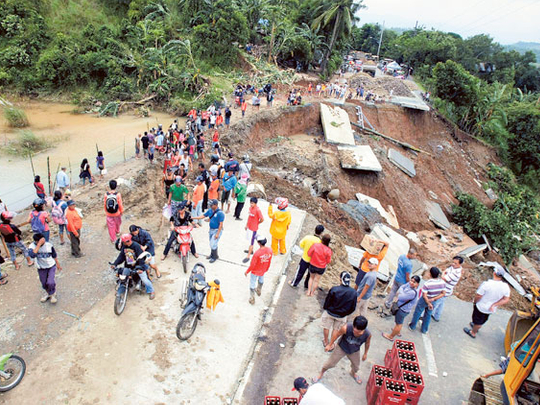
Manila: Deadly floods that have swamped nearly all of the Philippine capital are less a natural disaster and more the result of poor planning, lax enforcement and political self-interest, experts say.
Damaged watersheds, massive squatter colonies living in danger zones and the neglect of drainage systems are some of the factors that have made the chaotic city of 15 million people much more vulnerable to enormous floods.
Urban planner Nathaniel Einseidel said the Philippines had enough technical know-how and could find the necessary financing to solve the problem, but there was no vision or political will.
“It’s a lack of appreciation for the benefits of long-term plans. It’s a vicious cycle when the planning, the policies and enforcement are not very well-synchronised,” said Einseidel, who was Manila’s planning chief from 1979-89.
“I haven’t heard of a local government, a town or city that has a comprehensive drainage masterplan.”
Eighty per cent of the Manila was this week covered in waters that in some parts were nearly 2m deep, after more than a normal August’s worth of rain was dumped on the city in 48 hours.
Twenty people have died and two million others have been affected, according to the government, which has said the floods will last for days and longer if more monsoon rains fall.
The deluge was similar to one in 2009, a disaster which claimed more than 460 lives and prompted solemn pledges from government leaders to make the city more resistant to floods.
A government report released then called for 2.7 million people in shantytowns to be moved from “danger zones” alongside riverbanks, lakes and sewers.
The plan would affect one in five Manila residents and take 10 years and 130 billion pesos ($2.77 billion) to implement.
But Einseidel said that while there had been some efforts to relocate squatters, they never succeeded.
“With the increasing number of people occupying danger zones, it is inevitable there are a lot people who are endangered when these things happen,” he said.
Squatters, attracted by economic opportunities in the city, often build shanties on river banks, storm drains and canals, dumping garbage and impeding the flow of waterways.
“The same people who were already told not to return to the rivers and creeks and floodways are back. They are there again and they are the ones who don’t want to leave now.”
He blamed the phenomenon on poor enforcement of regulations banning building along creeks and floodways, with local politicians often wanting to keep squatters in their communities to secure their votes at election time.












